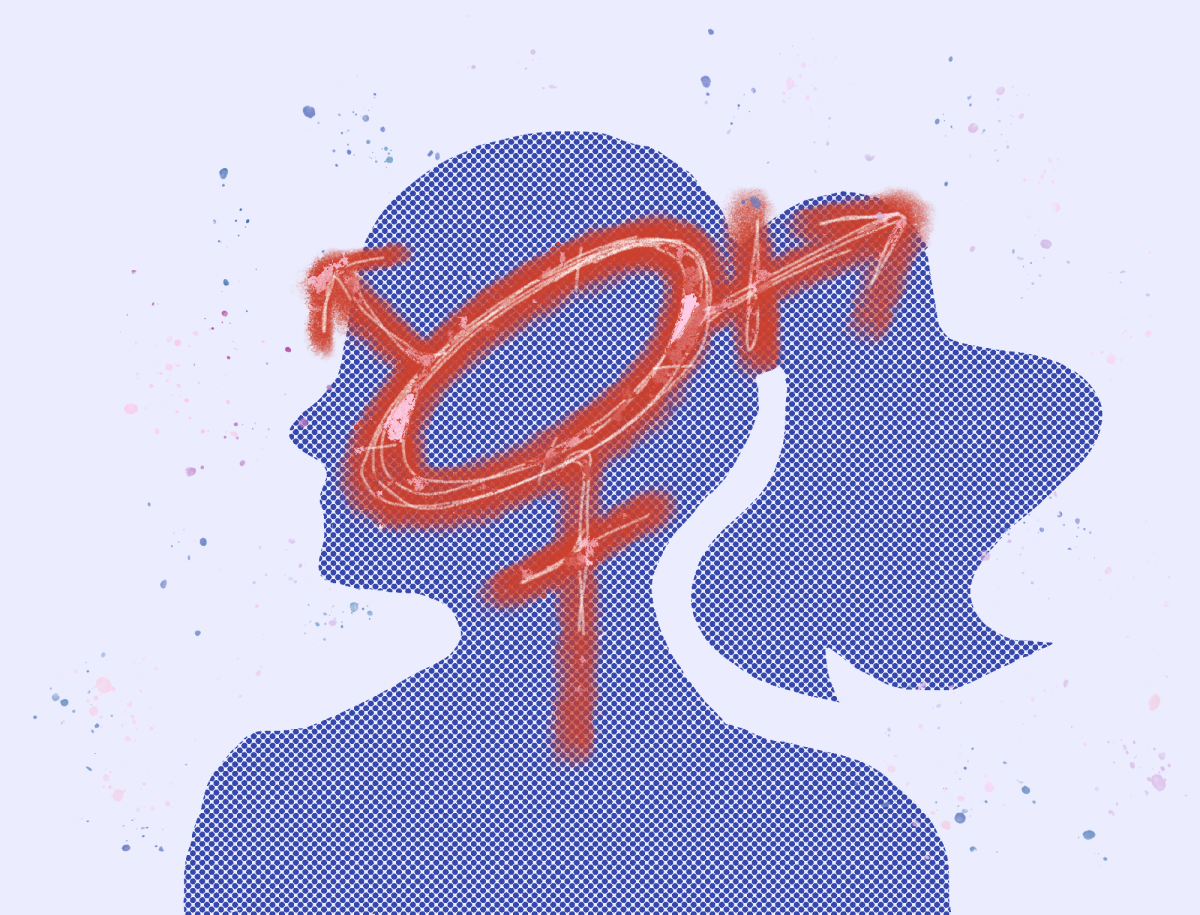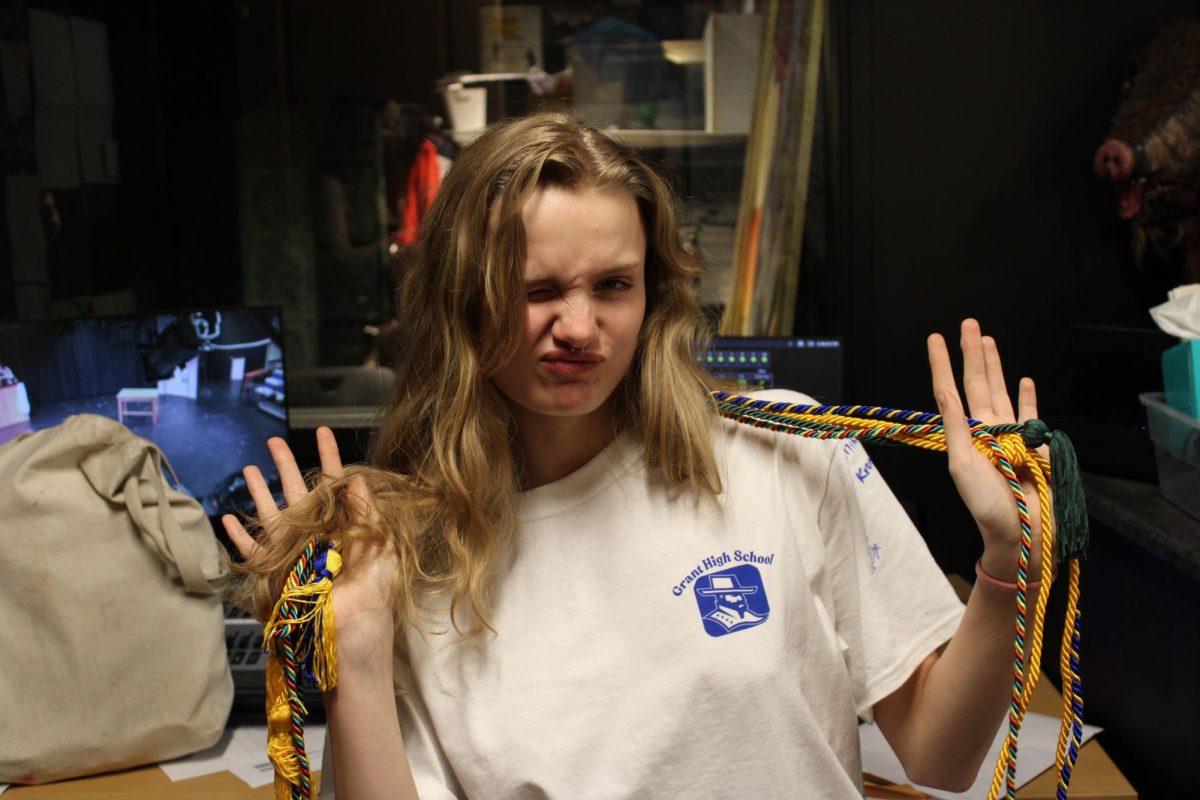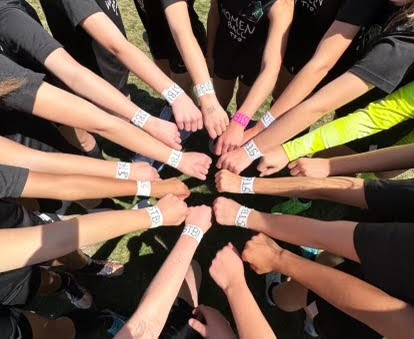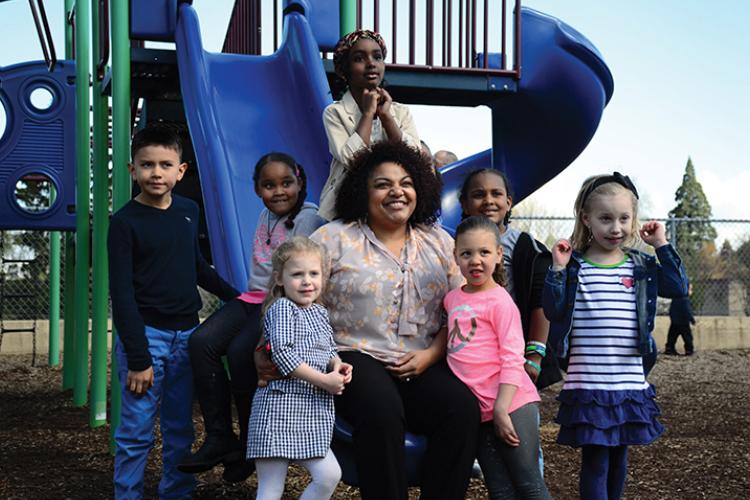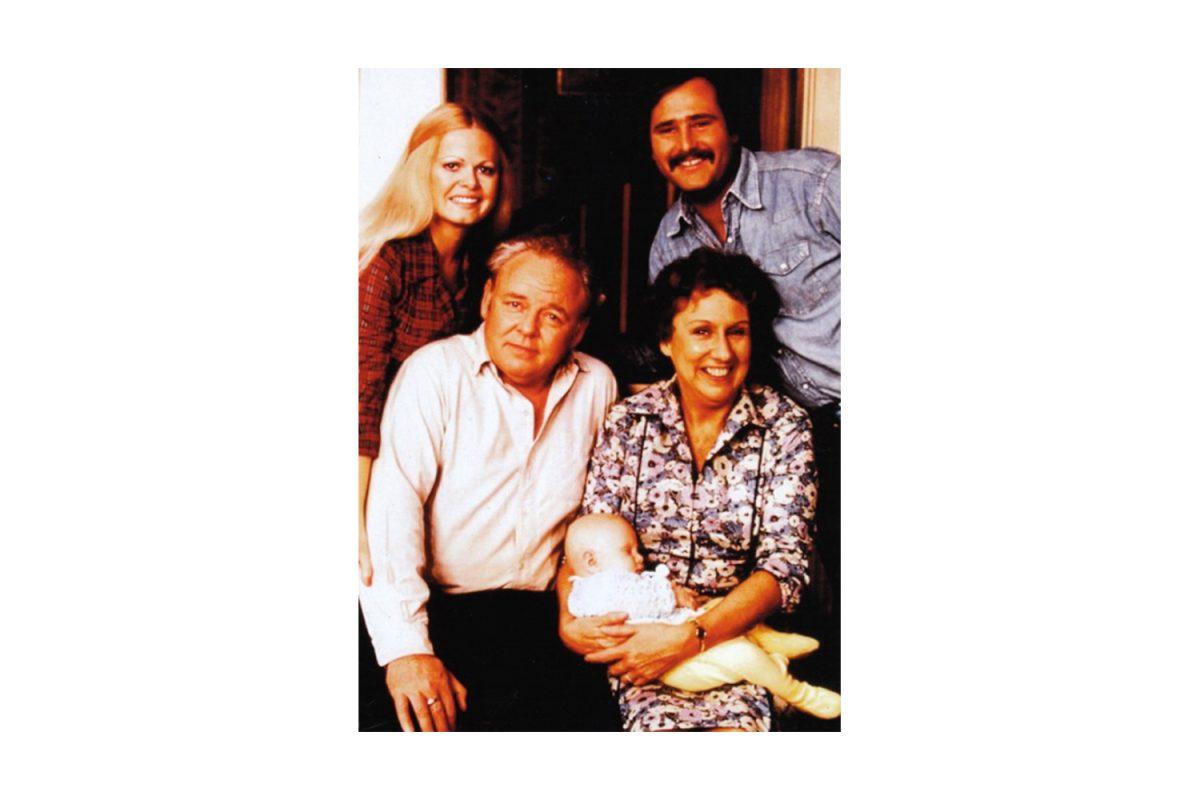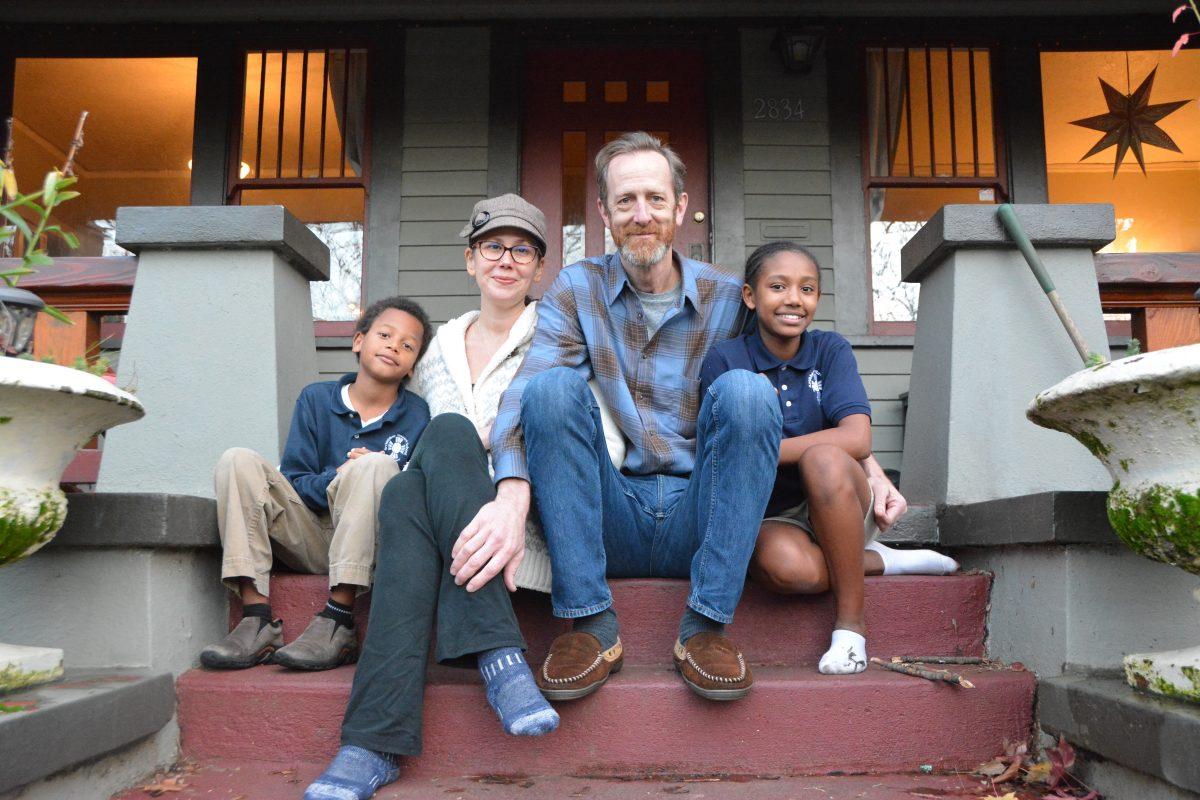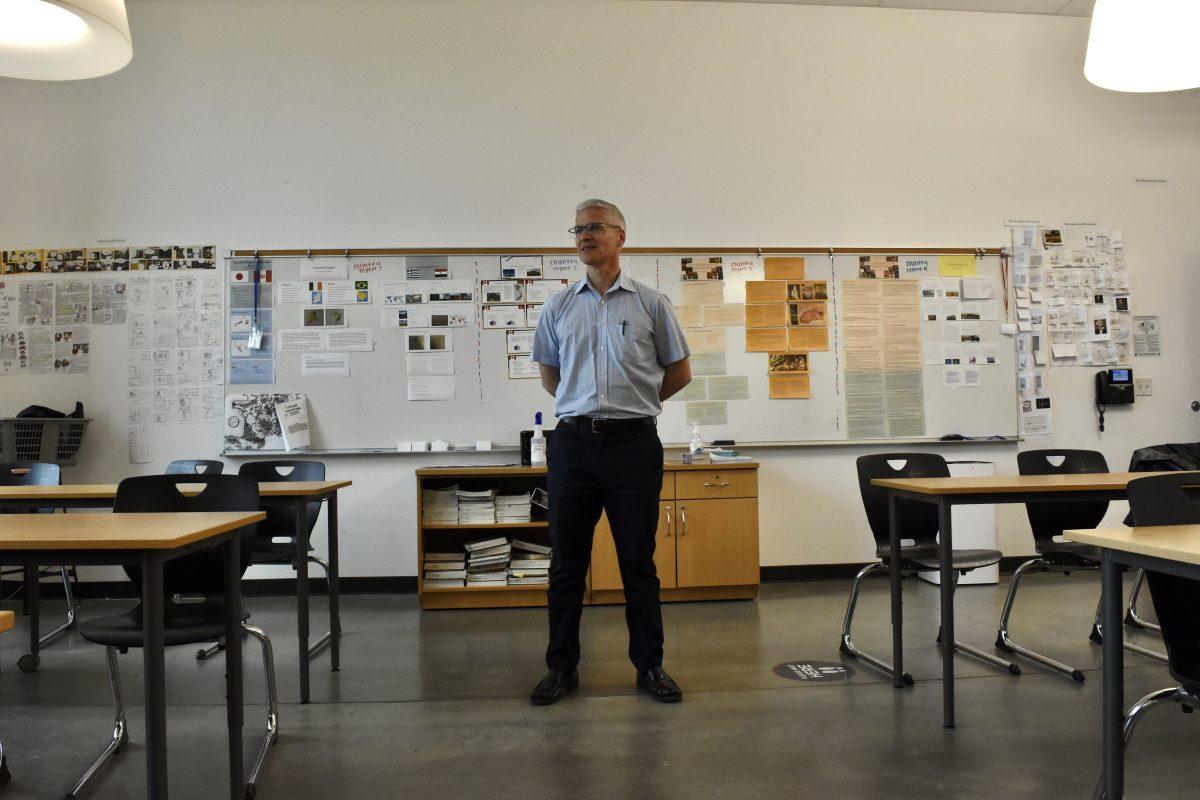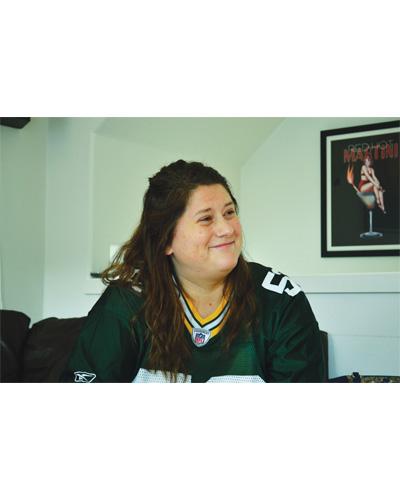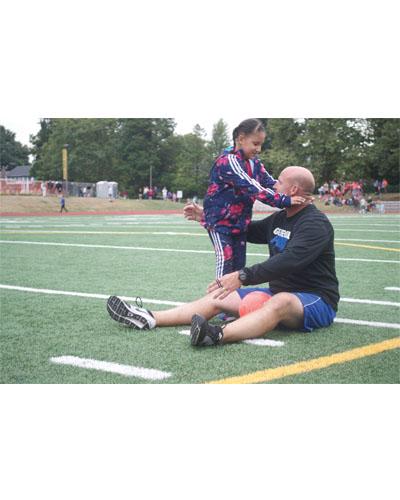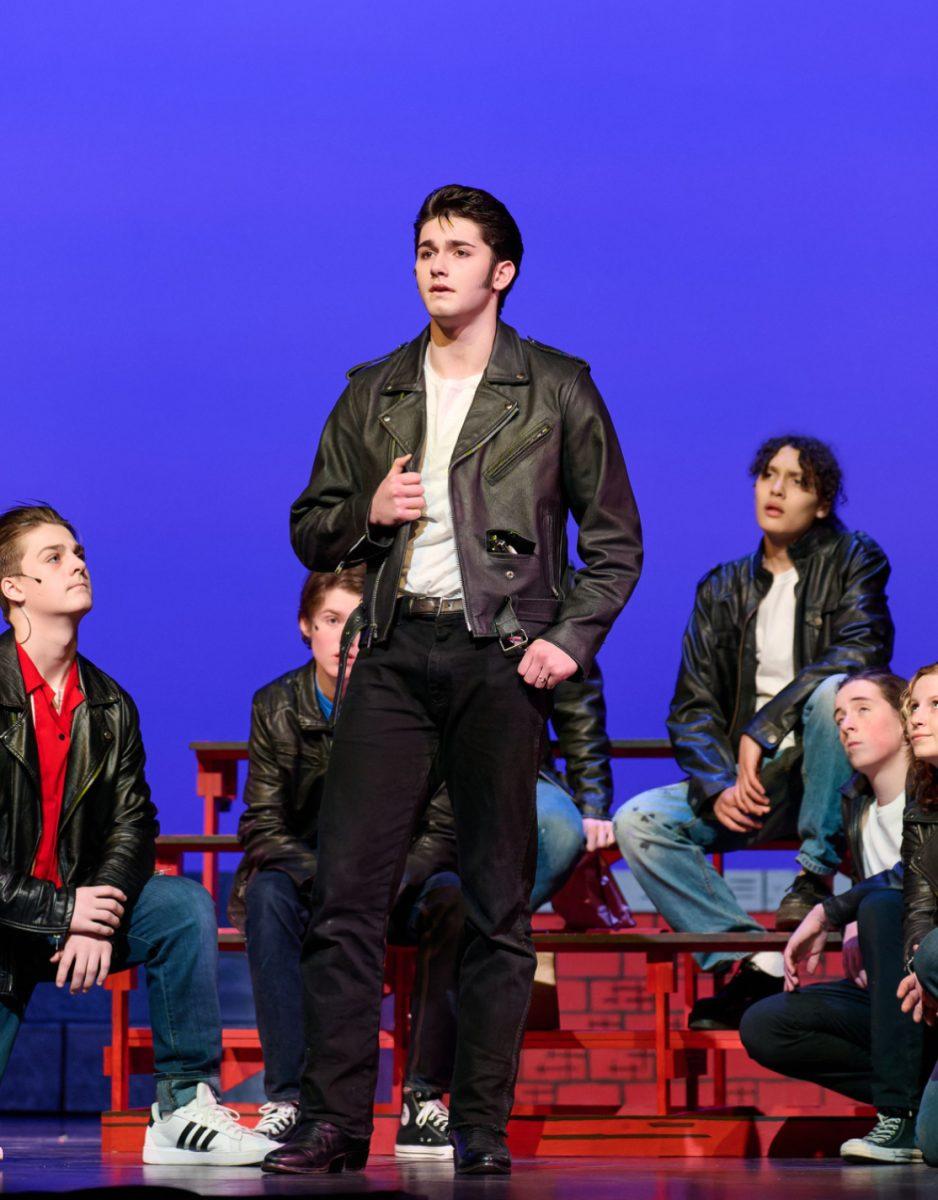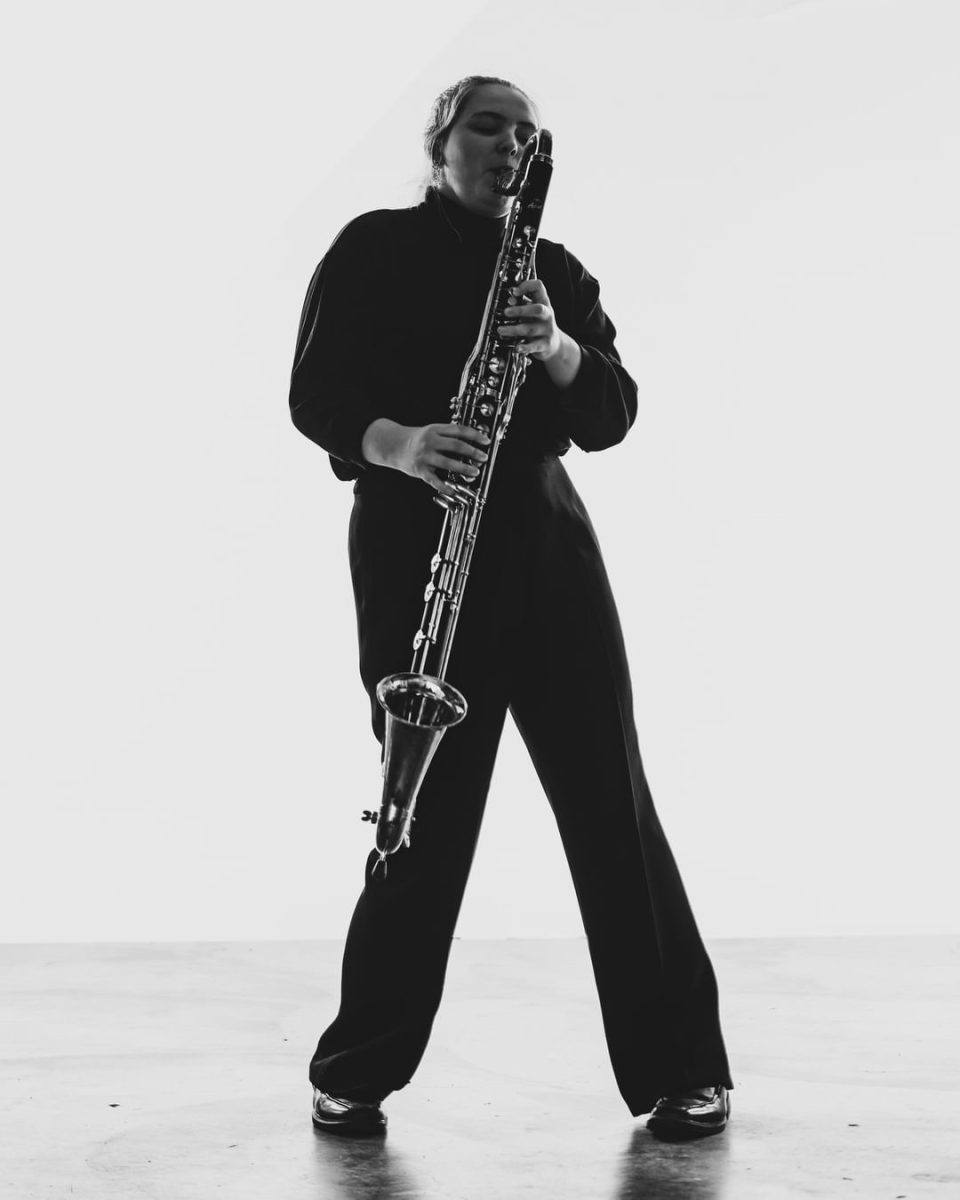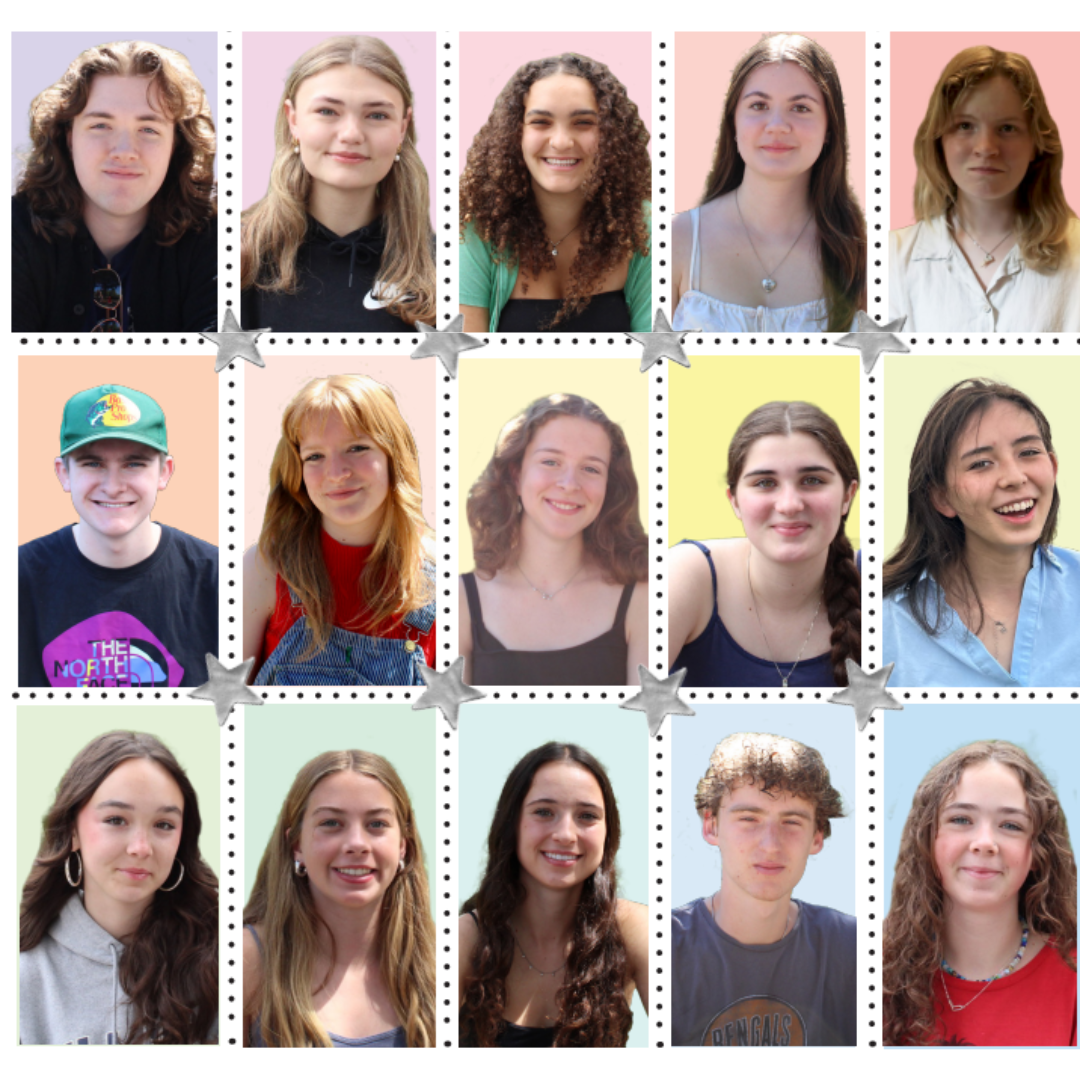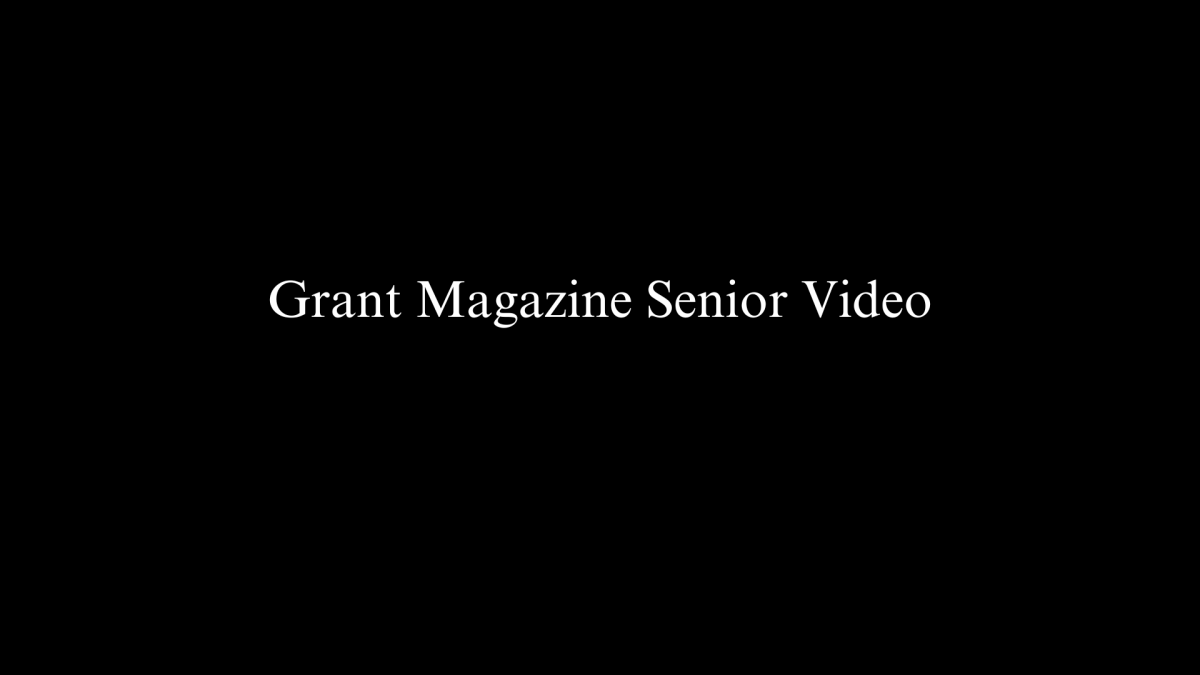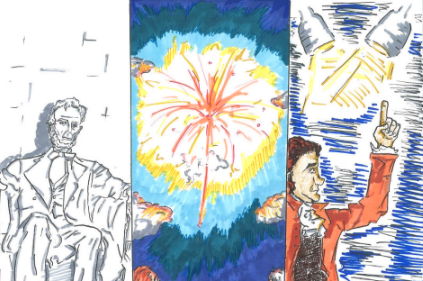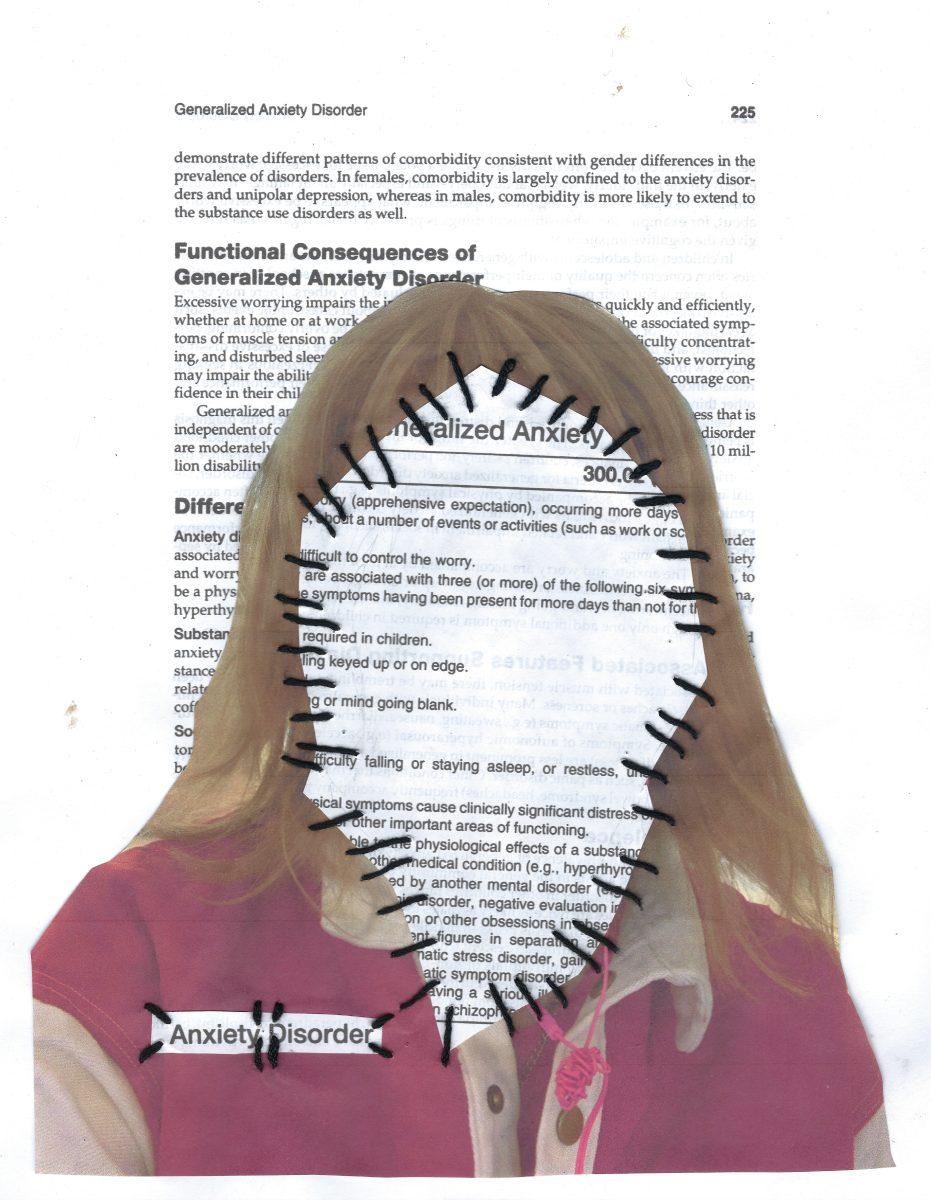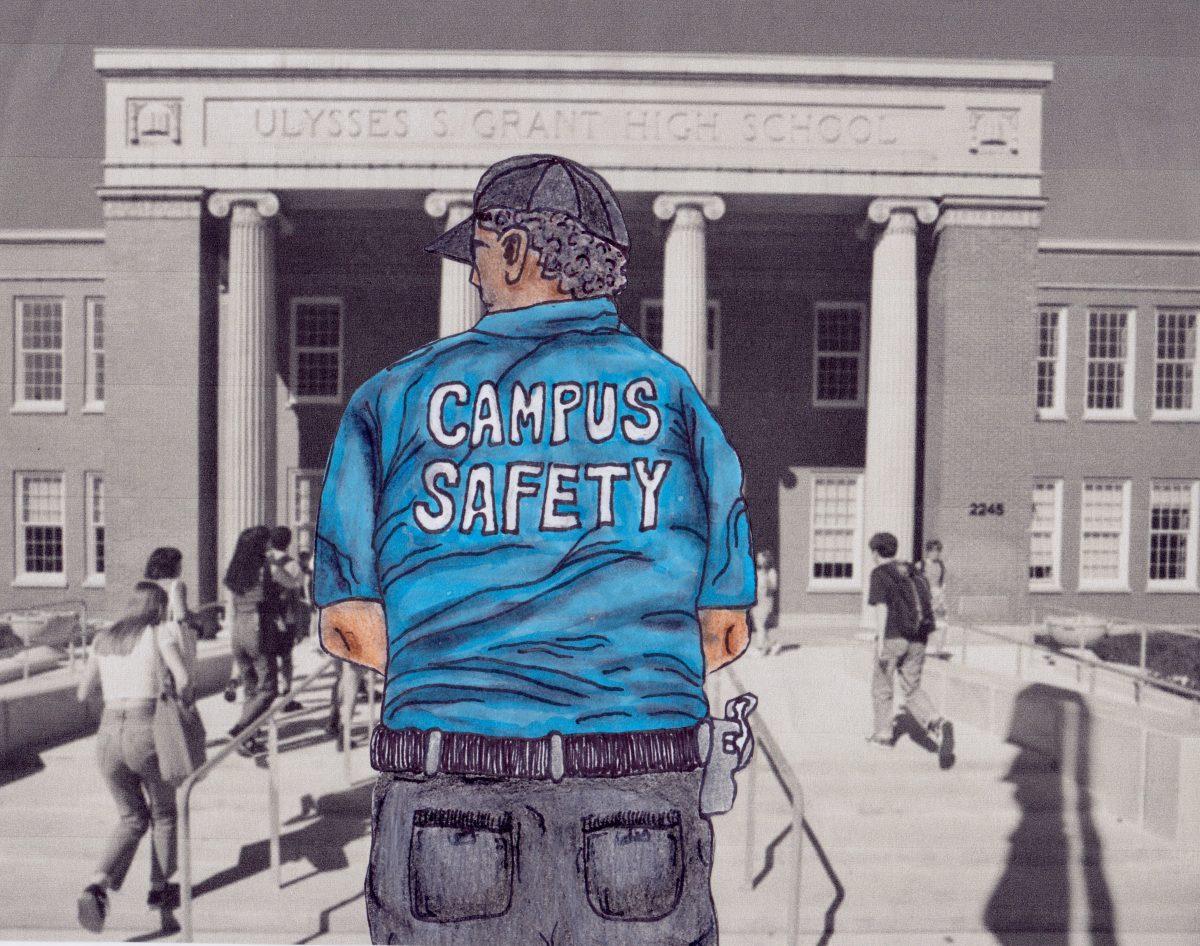 The text “1980” buzzes in front of a familiar American public high school backdrop: a football practice, shuffling feet and a yelling coach. Gentle guitar music blankets a sincere conversation between a blond pair at the top of the bleachers. The cheerleader implores the football player in a melodramatic plead about emotional distance. The shallow answer that comes from the stone-faced football player, “I love you so much, it scares me,” is soon drowned out by Van Halen.
The text “1980” buzzes in front of a familiar American public high school backdrop: a football practice, shuffling feet and a yelling coach. Gentle guitar music blankets a sincere conversation between a blond pair at the top of the bleachers. The cheerleader implores the football player in a melodramatic plead about emotional distance. The shallow answer that comes from the stone-faced football player, “I love you so much, it scares me,” is soon drowned out by Van Halen.
Torn from this comfortable teenage drama, we pan down from the summit of the metallic steps. Beneath the bleachers, we are introduced to the underbelly of the high school, dingy and stilted. A messily dressed, looming group of boys are passionately discussing Led Zeppelin’s drummer and justifying wearing gory band shirts in church. Freaks. A girl drowning in her father’s green army jacket, Lindsey Weir (Linda Cardellini) waits eagerly on the outskirts, observing them — our protagonist is an outsider.
The crunchy acoustic theme from “Caddyshack” (1980) breaks in as three boys round the corner of a nearby school building. They carry out a series of boisterous Steve Martin impressions, complete with corny facial expressions and exaggerated gestures. Geeks. Three other equally small freshmen appear and begin verbally abusing the boys for their nerdiness. Lindsey arrives, standing up for the geeks, one of which is her brother, Sam Weir (John Francis Daley). She is well-meaning and too honest — defending her brother makes him seem weak in this hostile ecosystem.
The bullies storm off, and the Geeks run elsewhere. Lindsey is left standing alone after the scuffle, frowning in the high school dust. She laments, “Man, I hate high school.” The theme song, Joan Jett’s “Bad Reputation,” is a defiant high-energy rock anthem whose irreverent lyrics represent the cast’s positions outside the mainstream.
Already, the audience’s view of a high school drama has been subverted, revealing the kind of lives our characters are leading. In his DVD commentary for the pilot episode, creator Paul Feig says, “For me, the freaks and geeks were always the most interesting people in the school, the groups that marched to the beat of their own drums.”
Despite it quickly fizzling out on network television, the one season of “Freaks and Geeks” that aired achieved critical acclaim and a cult following. The show’s appeal lies in its intricate and in-depth character arcs, story beats and charming character dynamics. The story is further fleshed out by tight yet accessible writing and grounded performances by rising young actors.
“Freaks and Geeks” (1999–2000) was a high-school-based sitcom that ran out of steam after one season on NBC, and by all standards of commercial television, failed. Due to erratic scheduling, a time slot competing with the popular show, “Who Wants to Be a Millionaire?” and no avenue for online viewing, the show received an average of under seven million viewers. Other sitcoms at the time, like “Friends” and “Frasier,” both received around 14 million.
This was not helped by a switch in management in the creative teams at NBC — the new president, Garth Ancier had attended boarding school and then Princeton University, never experiencing public high school in America. According to an interview in The Guardian with the show’s executive producer Judd Apatow, he and supervising director Jake Kasdan had multiple arguments with the network concerning a “lack of victories” in the script and that the characters needed to be “cool.”
The writers, still wanting to produce something that would represent the average high school experience, continued the behind-the-scenes conflict that made up the rocky production of the program’s 18 episodes.
Despite this contention, the showrunners were able to realize their vision. NBC management’s “lack of victories” criticism lies in the fact that in every episode’s arc, characters face a range of external and internal struggles: bullying and the accompanying violence, dysfunctional and neglectful families and parental figures, challenges from school systems, rocky friendships and relationships, grief and identity.
While the characters confront and attempt to cope with these issues, they don’t necessarily “win” at the end of an episode. In the pilot, Lindsey is caught cutting class and has to go to the homecoming dance. Despite her initial reluctance to attend, we later see her watching the awkward joy of the dance and even joining in, creating a quiet understanding that not all hope is lost.
This same lesson rings true for most of our emotional and mental journeys in adolescence, and adult life as well. Vulnerable realizations about true issues in each of these high schoolers’ lives lead to reckonings within friend groups and relationships that strengthen the main struggles within individual character arcs. The absence of clearcut victories within “Freaks and Geeks” storylines allow for the characters to experience growth and the uneasy joy found through the awkward defeats of adulthood’s slow start.
Lindsey and Sam’s familial bond serves as a bridge between the freaks and the geeks in the show, meaning the most fascinating character interactions are between members of opposing groups. Despite their diametrically opposed social castes, the nerds and burnouts are able to find oddly charming connections.
Throughout each issue and character beat that is tackled, the writing remains strong and consistently pithy. Dialogue is realistic and not convoluted, but still manages to convey the inner depth of the characters’ feelings and views. Important lines are short, quotable and funny in the same way as the absurdity of adolescent life.
The comedy in “Freaks and Geeks” serves as a reflection of the humor that we find in uncomfortable situations in real life, yet doesn’t undercut the vulnerability of the emotional beats. Occasionally, the dialogue feels awkward, modeling how real conversation might fall on a stranger’s ears. Despite this, each performance from the show’s young actors is consistent, subtle and relatable. Linda Cardellini is the standout, demonstrating the range of emotions in her character’s rollercoaster of a journey.
Martin Starr is also notable for his strong performance as the geeks’ understated and relatable comedic relief, to which he adds emotional depth later on in the season with the dissection of his home life. Despite conflict with the network, these performances, as well as each layer of production, succeed in creating compelling television and a personal, relatable experience for viewers.
With the current trend of teenage shows facing criticism for romanticizing drug use, sex and violence, the ability “Freaks and Geeks” has to cover similar topics with more sensitivity and nuance is a breath of fresh air. Because the show was on death row for the entirety of its production, there was a lot less oversight over the exact content of the script, which further allowed the writers and producers to honestly portray these experiences.
Instead of glorifying these activities as edgy rebellions against unjust authority or demonizing them to make a moral decry, the characters explore these concepts through the lens of real teenagers experimenting for the first time in their lives. While “Freaks and Geeks’ is packaged in specific Generation X aesthetics and experiences, the eternal themes of growing pains and of encountering the uncomfortable parts of maturing, remain applicable to younger generations.
One of the show’s glaring flaws is its lack of diversity. The entire cast of main characters are white, and the only people of color are background characters with limited dialogue. The only kind of adolescence depicted is that of melancholic suburbanites. The show would have been stronger had it touched on themes of ostracization and pressure to fit into certain groups through the lens of kids of color.
While economic class as well as gender play into the motivations and positions of the characters in their struggles, and those storylines are handled well, the angle of how cultural identity might factor into the public high school experience and the ups and downs of teenage life are not covered. Diversity was not given much stock in the production of television shows at the time, but it’s hard to ignore this glaring gap when evaluating the show through a contemporary lens.
“Freaks and Geeks” also launched many careers in acting and production. Judd Apatow and Paul Feig have both achieved critical and box-office successes in writing, directing and producing. The actors portraying the Freaks, Linda Cardellini, Jason Segel, Seth Rogen, James Franco and Busy Phillips all went on to be relatively successful actors. Other cast members have also found success in Hollywood, most notably John Francis Daley, who was on the writing team for Marvel’s “Spiderman: Homecoming.”
Mike White, who has recently received acclaim for writing and directing HBO’s “White Lotus,” also worked on “Freaks and Geeks” as a writer. He wrote the fifth episode, “Kim Kelly is My Friend.” It is now available on Hulu, but at the time, NBC refused to air it on cable television, citing the plot and content being too “rough,” according to Judd Apatow. Kim Kelly (Busy Phillips) had spent the first four episodes berating and intimidating both Lindsey and the Geeks, and starts out this episode doing the same thing.
Then, miraculously, Kim invites Lindsey over to her house for dinner. She later reveals the real reason she is being nice — to prove to her parents that she has a regular, smart friend, and to cover for her lie of spending time with Lindsey’s rich family when she was out with the Freaks.
The lie soon falls apart, and the parents begin yelling at and threatening Kim. Lindsey helps make a getaway. Seeing Kim, her previous tormentor, cry and apologize, Lindsey realizes why she may act the way she does. This event fosters the beginning of their friendship.
Later in the episode, Kim finds a surprising ally in Sam after seeking revenge on a girl that has coincidentally been targeting him. Sam doesn’t finish the episode triumphing over this bully, but the newfound connection both he and his sister have with Kim ends up getting him his retaliation. Sam thanks her in the bustling high school hallway, and Kim utters the episode’s final words: “No problem, geek.”

